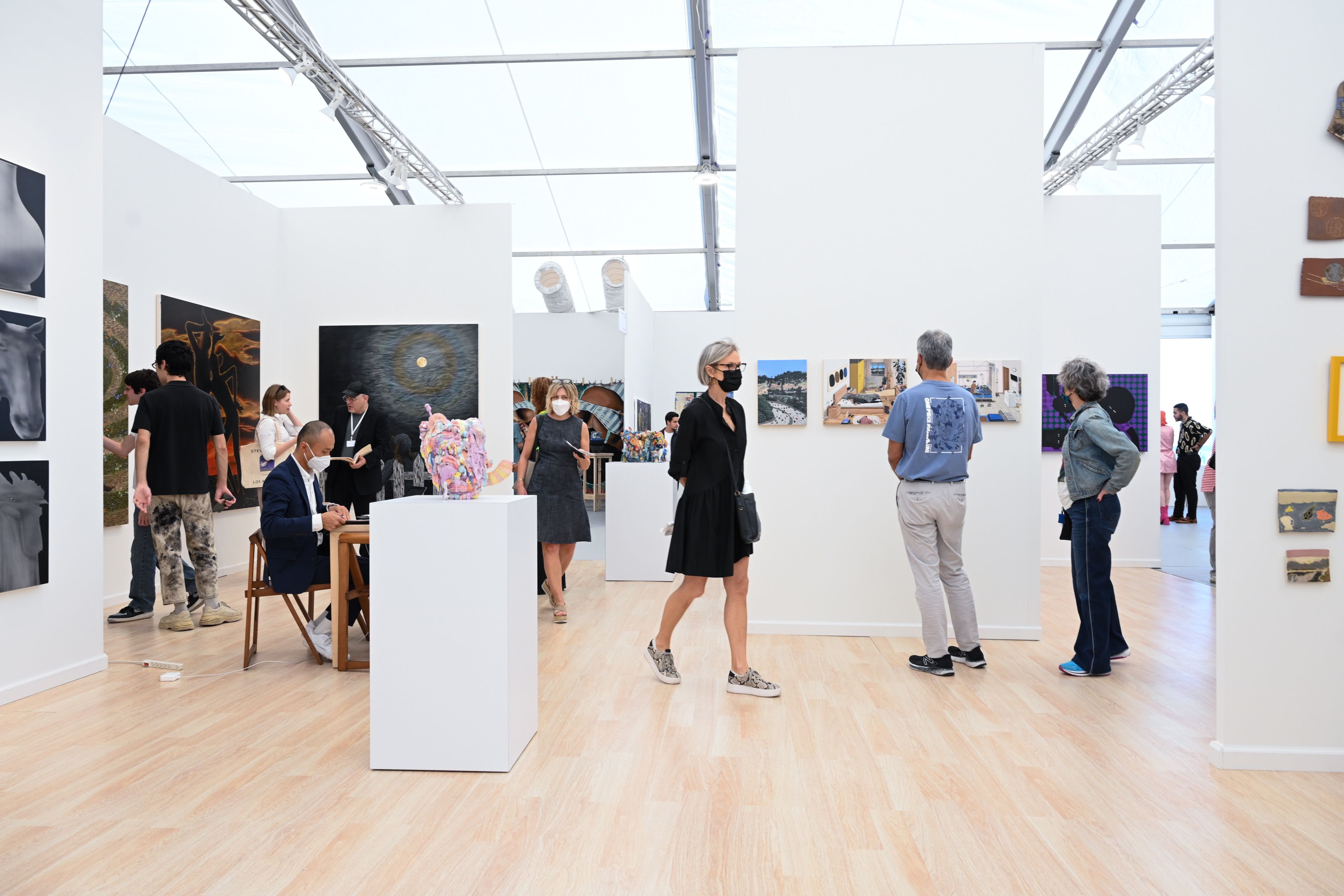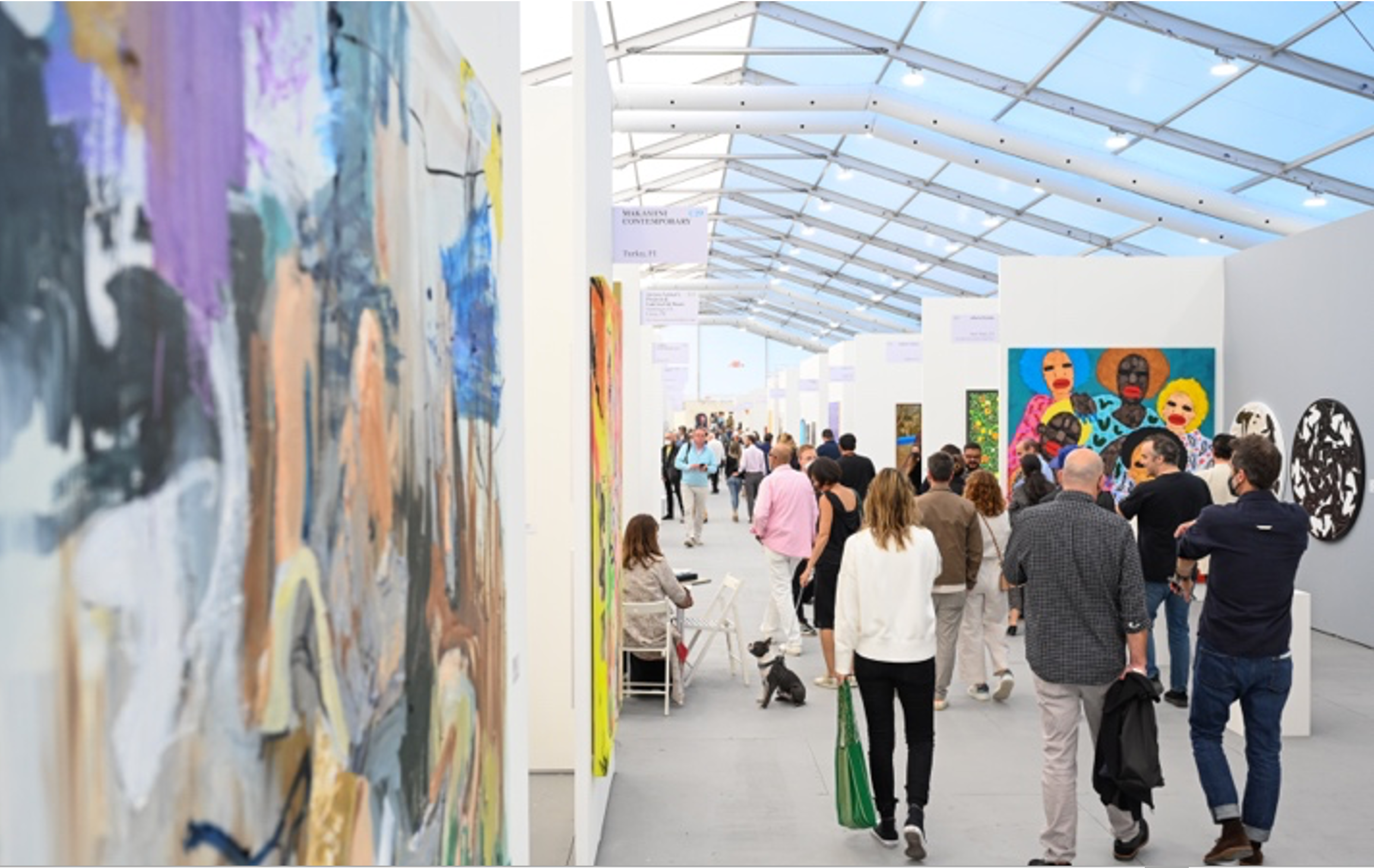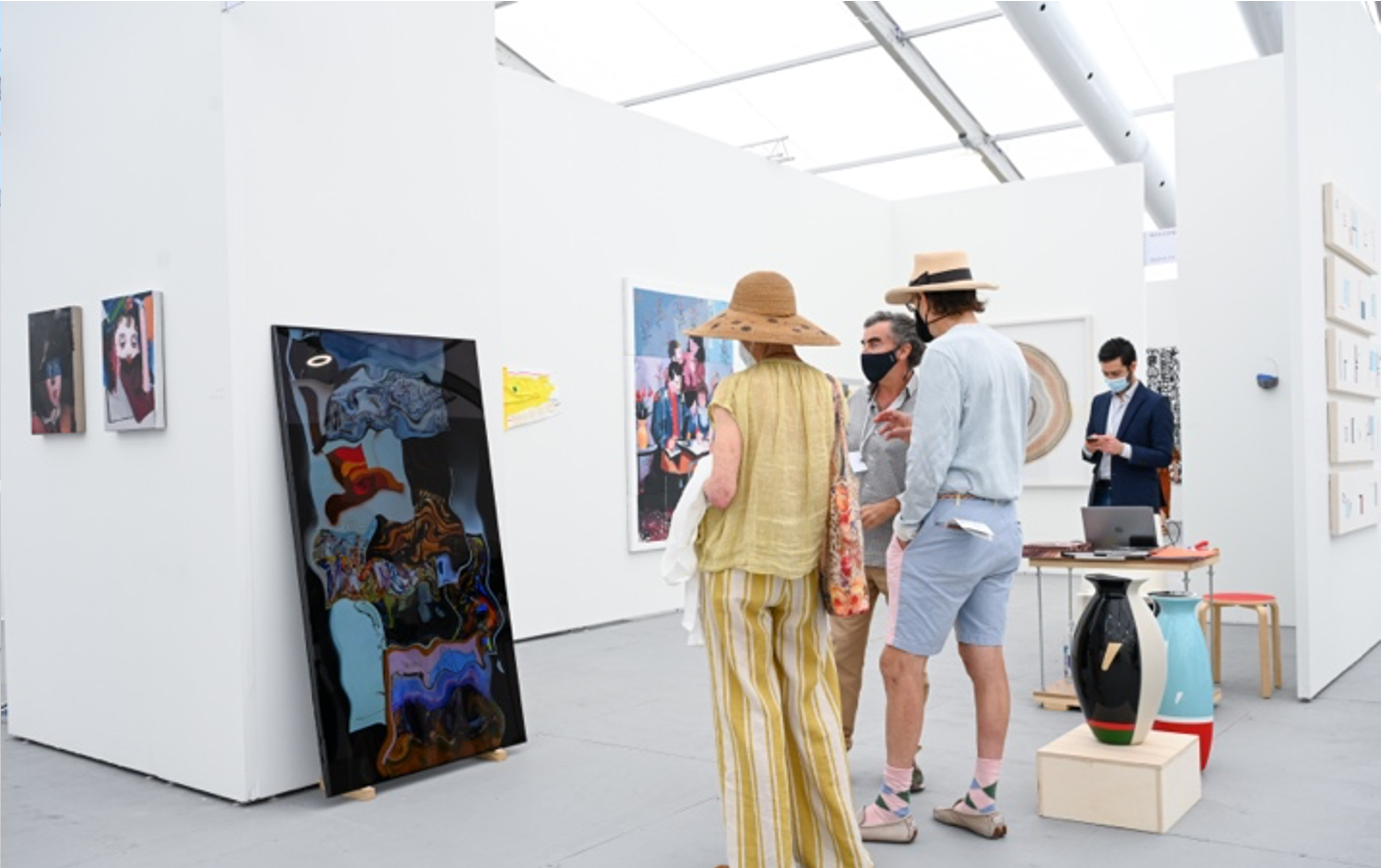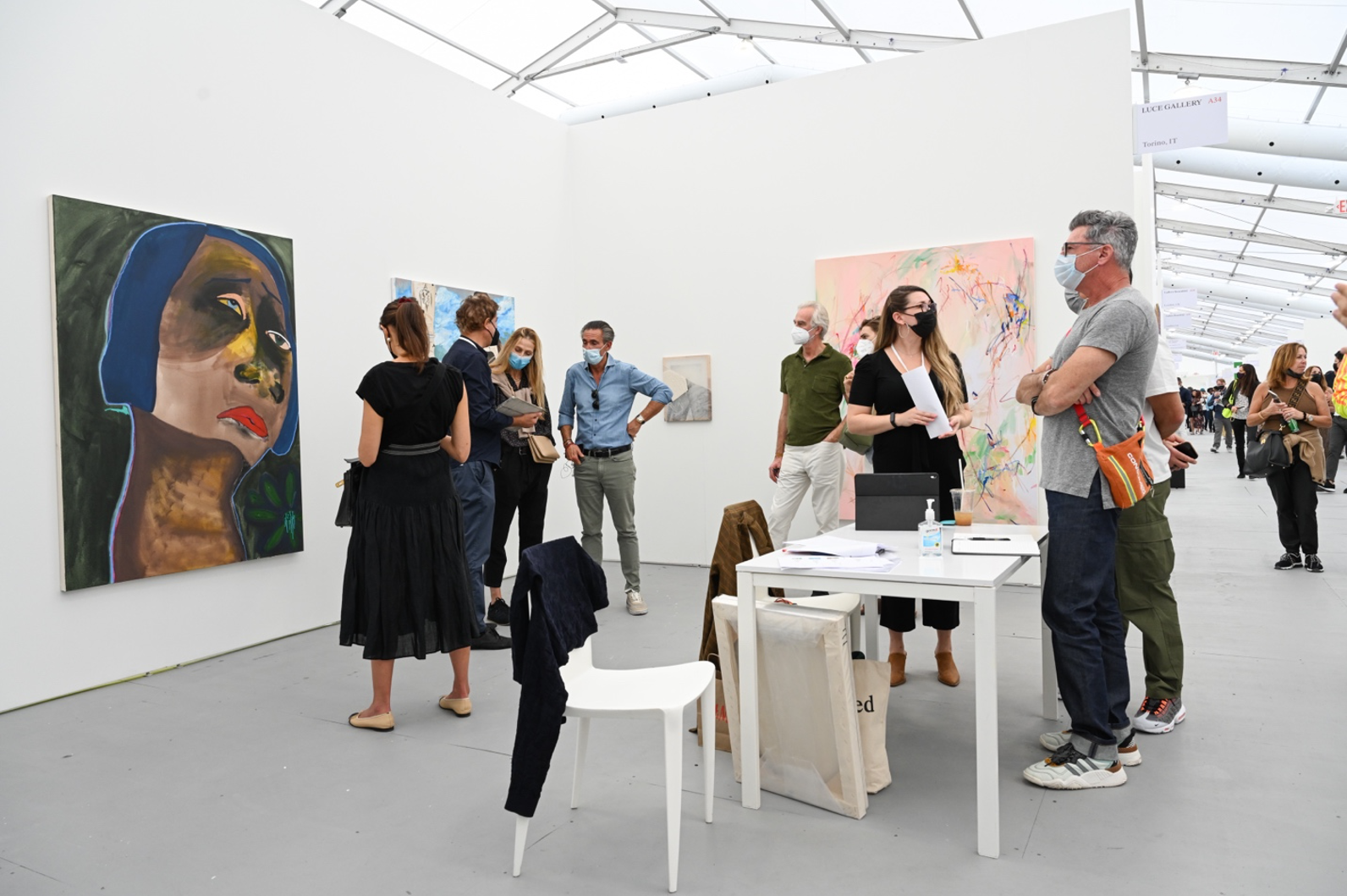
I was talking with an artist I know recently, and we got to speaking about “collaboration,” what that word means in the context of an artistic career. I tended to define the word in careerist terms: networking, shared gallery representation, the odd branded deal with, say, an app, or a clothing company. To this artist, though, “collaboration” conjured up the utopia of her time at art school: working in a shared studio space with peers, riffing on what they were producing, letting it osmose into her own work. “It’s play, and it challenges you in ways that working solo doesn’t,” this artist told me of her time spent bouncing ideas off studio-mates in school. “But most galleries don’t care for collaborative work, because artists are commodities.”
When we talk about “the art world,” what we are usually talking about is that word, commodity, along with its attendant concerns of supply and demand, value and circulation. Works that artists make become commodities in the globalized art market, the artists themselves become commodities in the institutional gauntlet of reputation-building and canonization, and their oeuvres, and indeed their entire artistic identities, get packaged into easily-digestible cuts of product. This, essentially, was the point that the artist I spoke to made: when the creation of art becomes wrangled into a career, all propensity for collaboration is strangled out of the process, because there is no such thing as collaboration between products looking to be sold— only competition.
I don’t think I’m saying anything novel here. Art as we understand it—that is, as both product and profession—has always contended with an inherent tension that the author and curator Paco Barragan has called “the dialectic mercantilization versus autonomy of art”. Before the globalized art commodity market, there was patronage by the court or the church. If you’re not selling your work as a product, you’re creating it as an advertisement, as John Berger put it, for a certain sitter’s fortune, prestige, or wealth. Money has to be made, of course. It always does.


Nowadays, that money is very often made on the international art fair circuit, which, with its flea-market format of close-proximity booths, presents perhaps the clearest encapsulation of Barragan’s notion of “mercantilized” art. Exhibitors vie for attention in a white wall version of a merchant’s bazaar, gently hawking wares to a class of collector elite. In the process, they subject the work they sell to what Elizabeth Dee called “context collapse:” stripping artistic practices of their full context and relevance in favor of selling cherry-picked samples that will best catch a passing collector’s eye. This process, as Dee points out, generally diminishes artists’ development, their gallery profits, and collector interest.
And yet, art fairs remain incredibly important to the economic survival of most galleries. According to Clare McAndrew’s Art Market Report, fairs accounted for 43 percent of all dealer sales in 2019, and while the pandemic lowered that percentage, it has quickly risen back to a high level of prominence since 2020, and looks to continue to do so. The fair as a sales method represents a general prioritizing of competition above all else, and that has trickled down to produce more surface-level interactions between individual players as well as thinner, more commodified practices. If mercantile modes dominate, then it follows that the logic of mercantilism will dominate as well.
And yet, treating craven competition as the only modality available to the art world is unproductive, even ahistorical. Traces of collaboration still persist, even within our contemporary market terrain. It was a grand spirit of economic collusion between artists, after all, that animated two of the closest historical forebears to the contemporary art fair as we know it. Paris’s Salon des Independants, for example, was started by artists such as Georges Seurat and Paul Signac in the late 19th century after the official state academy would not display their work and became an important market and artistic proving ground. The 1913 Armory Show in New York, too, was put into motion by a coalition of artists known as the Association of American Painters and Sculptors (AAPS), who likewise sought to extend exhibition (and sales) opportunities to artists who were operating outside the academic and institutional bounds of supposed good taste. Even the hyper-financialized, privately-owned fairs that cropped up in the mid-20th century—your Art Basels and Art Colognes, in many ways the templates for today’s international art selling experiences—exist downstream from this spirit of unity, with gallerists at the helm instead of artists.
There is a certain point, however, where neat statements on the persistence of the collaborative spirit begin to collapse. Collaboration may have given us the contemporary art fair, but the contemporary art fair has not, for the most part, furthered artistic collaboration. There is nothing resembling the Fauves’ syncretion at the 1906 Salon, for example, or the artistic explosion that resulted from Duchamp and Matisse rewiring audience’s brains at the 1913 Armory. Brute commodification, to Dee’s point, has only left room for approaches of a similar caliber. A gallerist I spoke to recently, for example, described collaboration with other galleries, especially at fairs, as a numbers game, where access to new markets or alleviated financial burdens are weighed against the opportunity cost of shared profits. He’s right, of course. But the point is that in a thoroughly mercantilized art world, even collaboration becomes a byword for more effective competition.

So, what to do? How to alleviate this pervasive suffocation of the collaborative spirit? To make room for the sort of generative crossovers that my friend, the artist, looks back on so fondly? I have a few pipe-dream suggestions: Share profits. Charge less to exhibit, so that smaller galleries can comfortably exist, and artists don’t feel obligated to compress their practice into a conveyor belt of content just to keep up. Pay writers, as Untitled has done here, to write about art, to give artists and their practice and their place in the market serious intellectual consideration and not let them flit off into an endless press cycle. But even still, these are still pleas for top-down tweaks rather than a roadmap for collaboration.
Maybe collaboration is too diffuse a word, too easily channeled into competitive modes, and I should be more precise in what I am urging: to build coalitions. It has been coalitions, after all, that have underpinned so many of the collaborative examples I have put forth in this piece. The Paris Salon and the 1913 Armory were products of artists working together, of course, but I am also reminded of the Artists Union in New York, who agitated for the federal government to include artists in the WPA’s federal patronage during the Great Depression and managed to stretch that patronage for several years through consistent demonstration and action. I am thinking, too, of their spiritual descendants, including the short-lived Art Workers Coalition (AWC), whose protests and list of 13 Demands led to more artist-conscious exhibition policies at New York museums in the late 1960’s. There’s also the Foundation for the Community of Artists, which continued the AWC’s project into the 1990’s, providing members with housing hotlines, job placement programs, group health insurance packages, and other such resources. With that history in mind, my other recommendation might seem obvious, even trite: for artists to work together anyway. Read old issues of Art Front or Art Workers News. Bounce work off each other, refute rote competition. Remember how historian Gerald Moore described those that participated in the Artists Union:
“Living in a society that by and large placed little value on their work, artists turned naturally to each other for stimulation, recognition of their achievements and affirmation of their lifestyle. It was within the milieu of the Union that artists were able to identify themselves as artists. The young men and women who came to meet and make friends, talk shop and exchange ideas were sowing the seeds of the eventual flowering of artistic activity of the late 1940’s and 1950’s during those early years. It was the Union that was the shelter and ambience to which most of the young artists of the time were drawn.”
Justin Kamp is a writer based in New York. He writes criticism, features, and fiction. His work has appeared in The Art Newspaper, CNN Styles, Artsy, Garage Magazine, and the New York Observer, among others. Follow him on Twitter, @justinkamp_ and Instagram, @justindotcomp